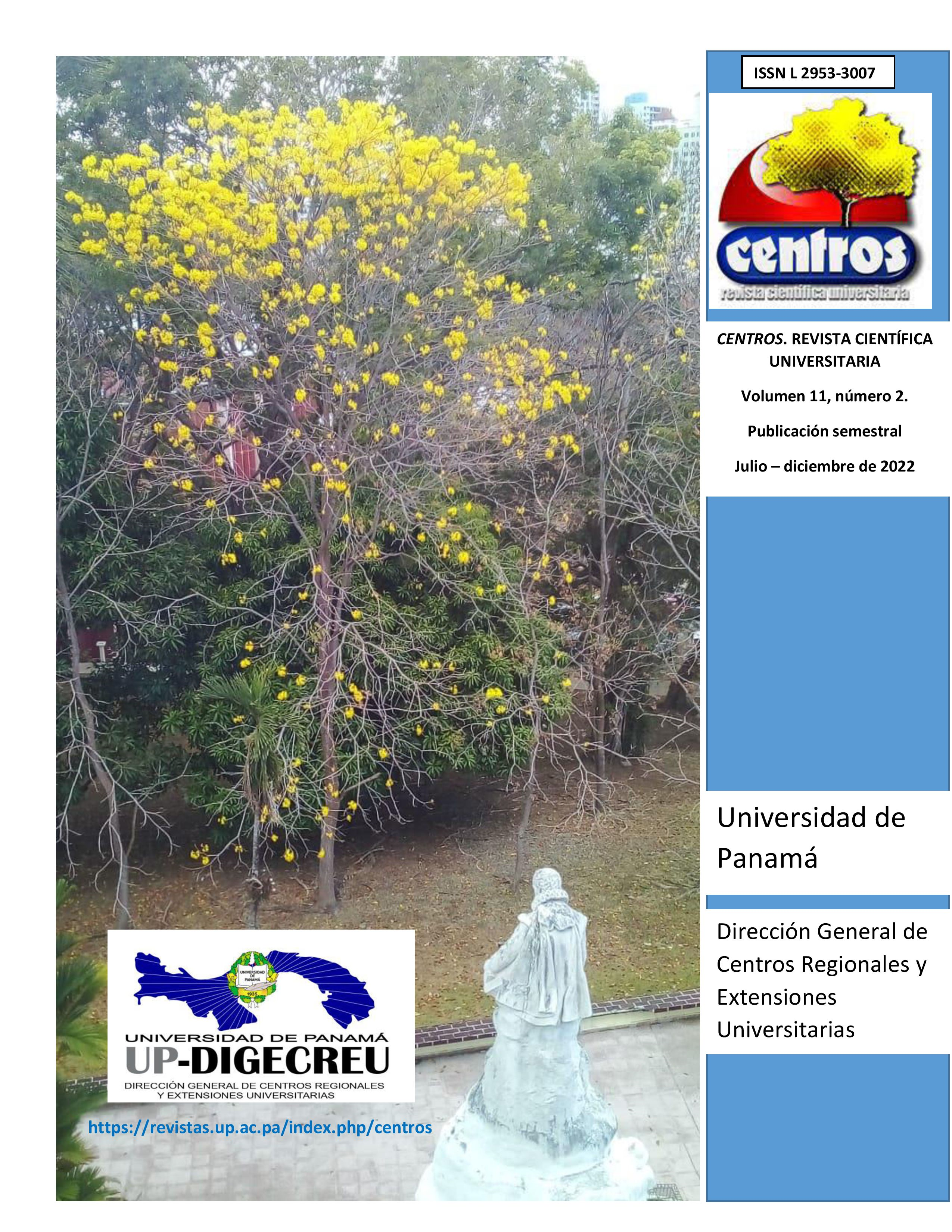Citas
Abraham, M. R., & Susan, T. B. (2017). Water contamination with heavy metals and trace elements from Kilembe copper mine and tailing sites in Western Uganda; implications for domestic water quality. Chemosphere, 169, 281–287. https://doi.org/10.1016/j.chemosphere.2016.11.077.
Al-Saleh I, Al-Doush I. (1997) Mercury content in skin-lightening creams and potential hazards to the health of Saudi women. Journal of Toxicology and Environmental Health, 51:123–130.
Autoridad de Protección al Consumidor y Defensa de la Competencia. Dirección Nacional de Asuntos del Consumidor. Departamento de Metrología (ACODECO)(2016). Investigación del Contenido Neto de Agua Embotellada.
Baird, R.; Eaton, A.; Rice, E. W. (2017). Standard Methods for the Examination for Water and Wastewater. American Public Health Association (APHA), American Water Works Association (AWWA), Water Environment Federation (WEF). 23rd Edition
Barba-Brioso, C., Fernández-Caliani, J.C., Miras, A., Cornejo, J., Galán, E., 2010. Multi-
source water pollution in a highly anthropized wetland system associated with the estuary of Huelva (SW Spain). Marine Pollution Bulletin 60, 1259-1269.
Brima, E. I. (2014). Physicochemical properties and the concentration of anions, major and trace elements in groundwater, treated drinking wáter and bottled drinking water in Najran area, KSA. This article is published with open access at Springerlink.com. Appl Water Sci DOI 10.1007/s13201-014-0255-x
Chapa-Martínez, L. Hinojosa-Reyes, A. Hernández-Ramírez, E. Ruiz-Ruiz, L. Maya- Treviño, J.L. Guzmán-Mar (2016). An evaluation of the migration of antimony from polyethylene terephthalate (PET) plastic used for bottled drinking wáter. Science of The Total Environment Volume 565, Pages 511–518.
Codex Alimentarius. 2019. International Foods Standards. Comité FAO/OMS. General Standard for Contaminants and Toxins in food and feed CXS 193-1995. Revisada en 2009 y modificada en 2019.
Contraloría General de la República. (2018). Panamá en Cifras. Producción y Venta de agua Embotellada en la República: años 2014 y 2018, Según trimestre.
Delafiori, J., Ring, G., & Furey, A. (2016). Clinical applications of HPLC-ICP-MS element speciation: A review. Talanta, 153, 306–331. https://doi.org/10.1016/j.talanta.2016.02.035
Echeverry, Ghisliane, Zapata, Andrés Mauricio, Páez, Martha Isabel, Méndez, Fabián, & Peña, Miguel. (2015). Valoración del riesgo en salud en un grupo de población de Cali, Colombia, por exposición a plomo, cadmio, mercurio, ácido 2,4- diclorofenoxiacético y diuron, asociada al consumo de agua potable y alimentos. Biomédica, 35(spe), 110-119. https://dx.doi.org/10.7705/biomedica.v35i0.2464
Environmental Protection Agency (EPA). U.S. (1983). Methods for Chemical Analysis of Water and Wastes. EPA-600/4-79-020
EPA, U.S., (1991). Maximum contaminant level goals and national primary drinking water regulations for lead and copper; final rule.Fed. Reg. 56, 26460–26564.
EPA, U.S., 2009. National Primary Drinking Water Regulations. EPA 816-F-09-004 Ferrer, A. (2003). Intoxicación por metales. Anales del Sistema Sanitario de Navarra, 26
(Supl. 1), 141-153. Recuperado en 16 de septiembre de 2020, de http://scielo.isciii.es/scielo.php?script=sci_arttext&pid=S1137- 66272003000200008&lng=es&tlng=es.
Gorgas G., J.; Cardiel L., N.; Zamorano C., J. (2011). Estadística Básica para estudiantes de ciencias. Departamento de Astrofísica y Ciencias de la Atmósfera. Facultad de Ciencias Físicas. Universidad Complutense de Madrid.
Guitart, R. y Giménez, N. (2012). ¿Qué es un «tóxico»? ¿Una propuesta de definición [What is a “poison”? Proposal of definition]. Medicina Clínica, 138(3), 127–132. https://doi.org/10.1016/j.medcli.2011.02.002
Hernández Sampieri, R.; Fernández Collado C.; Baptista Lucio, P. (2014). Metodología de la Investigación. Sexta Edición. Editorial McGraw – Hill/Interamericana Editores,
S.A. Impreso en México.
Instituto Nacional de Estadística y Censo (INEC). Contraloría General de la República de Panamá.2018.https://inec.gob.pa/archivos/P0579518620191205133546Cuadro% 2019.pdf.
Miller, J. C y Miller, N. J. (2002) Estadística y Quimiometría para Química Analítica.
Pearson Educación, S.A. Cuarta Edición. Editorial Prentice – Hall.
Ministerio de Salud (MINSA) (2014). Informe de Monitoreo del Agua Embotellada que se comercializa en Panamá.
Montes, V. y Henríquez. (2016). Inventario de liberación de mercurio en Panamá, según el Programa de las Naciones Unidas para el Medio Ambiente. Revista de Iniciación Científica. Vol. 2- Nº 1, pp. 31 – 39
Reglamento Técnico de Dirección de Normas y Tecnología Industrial (DGNTI)- Comisión Panameña de Normas y Técnicas (COPANIT) 77-2007. Ministerio de Comercio e Industrias.
Reimann, C., Birke, M., Filzmoser, P. 2010. Bottled drinking water: Water contamination from bottle materials (glass, hard PET, soft PET), the influence of colour and acidification. Applied Geochemistry, Vol. 25. pp. 1030–1046.Retrieved March 11, 2013 from: http://www.who.int/water_sanitation_health/
Reyes, Y. C., Vergara, I., Torres, O.E., Díaz, M., González, E. (2016). Contaminación por
metales pesados: Implicaciones en salud, ambiente y seguridad alimentaria. Revista Ingeniería, Investigación y Desarrollo, Vol. 16 Nº 2, Julio-diciembre 2016, pp. 66-77
Shimamoto, Gustavo G., Kazitoris, Bianca, Lima, Luis F. R. de, Abreu, Nathassia D. de, Salvador, Vitor T., Bueno, Maria Izabel M. S., Castro, Eustáquio V. R. de, S. Filho, Elói A., & Romão, Wanderson. (2011). Quantification of antimony in Brazilian polyethylene terephthalate (PET) bottles by X-ray fluorescence and chemometric evaluation to verify the presence of recycled pet through iron content. Química Nova, 34(8), 1389-1393. https://dx.doi.org/10.1590/S0100-40422011000800017
Westerhoffa, Paul, Prapaipongb, Panjai, Shockb, Everett, Hillaireaud, Alice (2008).
Antimony leaching from polyethylene terephthalate (PET) plastic used for bottled drinking wáter. Water Research. Volume 42, Issue 3, Pages 551–556. doi: 10.1016/j.watres.2007.07.048.
WHO, 2018. World Health Organization. Guidelines for Drinking-water Quality. 8.10.061

